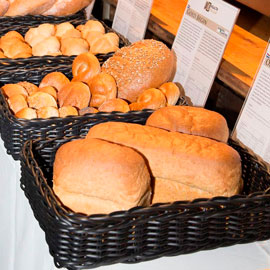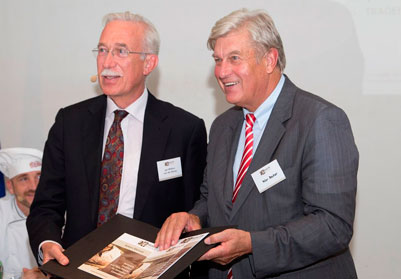Research meets craft: Breads with a plus on health
- Like
- Digg
- Del
- Tumblr
- VKontakte
- Buffer
- Love This
- Odnoklassniki
- Meneame
- Blogger
- Amazon
- Yahoo Mail
- Gmail
- AOL
- Newsvine
- HackerNews
- Evernote
- MySpace
- Mail.ru
- Viadeo
- Line
- Comments
- Yummly
- SMS
- Viber
- Telegram
- Subscribe
- Skype
- Facebook Messenger
- Kakao
- LiveJournal
- Yammer
- Edgar
- Fintel
- Mix
- Instapaper
- Copy Link
Posted: 17 October 2014 | Kampffmeyer Food Innovation | No comments yet
As a result of two in-depth EU projects a team of leading European researchers, industry partners and artisan bakeries have developed a range of innovative grain-based raw materials for baked goods with improved nutritional profiles…


The EU-funded HealthGrain and HealthBread projects set out to develop wheat-based raw materials that would help to improve the nutritional value of baked goods. Intended to boost health promotion by improving the nutritional content of staple foods, the interlocking projects were the EU’s largest in this area to date. Now, following seven years of research and product development and a total investment of 17.5 million €, the studies are complete and the results are bearing fruit.


Jan Willem van der Kamp (Project Coordinator) presents the HealthBread ‘Baker Manual’ to Mr. Peter Becker (President of the German Association of Artisan Bakeries)
The project partners have developed new technologies for the production of more nutritious raw materials on an industrial scale. The new wheat products can be used to produce white and whole grain baked goods with better nutritional profiles. Artisan bakeries from Germany, Italy, the Netherlands and Austria have verified the ingredients’ feasibility in practice by producing popular region-specific baked goods. The findings of the projects have now been put together in a bakers manual which will be made available to bakeries across Europe to encourage the production of health-promoting staple foods.
The HealthGrain project
Researchers working on the HealthGrain project came to two main scientific conclusions: On the one hand, their studies proved that it is the aleurone layer surrounding the wheat kernel that contains the grain’s highest amount of valuable nutrients – and not, as was previously believed, the wheat germ. The research showed that wheat aleurone cells contain considerably more vitamins, minerals, dietary fibre, and antioxidants. On the other hand, the scientists discovered that the whole grain’s nutrients are more bioavailable after the grain has been fermented. Using this knowledge as a base, technologies for the production of corresponding wheat raw materials were developed.
The HealthBread project
During the HealthBread project, the theories of the HealthGrain project were put into practice. The industry partners implemented the innovative technologies to produce wheat aleurone and fermented wheat whole grain concentrate. Both raw materials were made available to the participating bakeries. The bakeries then created several recipes for delicious and nutritionally improved baked goods, with one product being brought to market maturity.
The findings of the projects are summarized in a bakers manual which provides inspiration for the production of health-promoting baked goods and gives advice about possible health-related claims that can be used when marketing these products.
Dr. Carola Funk, Head of R&D at Kampffmeyer Food Innovation, sums up: “These projects provide an impressive demonstration of how outstanding and innovative products can come to life if research is combined with artisan craftsmanship. The HealthBread project was particularly exciting because of its diversified character. On the one hand, we were able to draw on our expertise in the development of grain-based raw materials. On the other hand, it allowed us to demonstrate our competence in regulatory and marketing related issues.”
Artisan project partner from Austria, Erich Kasses, adds: “I have taken part in several EU projects, but this one was unique because research and practice were very tightly interlocked. I learned a lot about wheat, our main raw material, and am now able to bake the most health-promoting baked goods in the world. Although at times it wasn’t easy to juggle the project with our everyday work, our personnel were very motivated and keen to see the results. In the end, all of our efforts were worth it: the bread we created has become a best-seller.




